Is Imagen AI the photo editing solution you’ve been waiting for? In this in-depth Imagen AI review, we explore its features, pros, cons, and how it stacks up against traditional image editing software.
In the ever-evolving world of artificial intelligence, Google Imagen AI emerges as a groundbreaking text-to-image model capable of generating incredibly realistic and detailed visuals.
As someone who’s been blogging and witnessing the rise of AI for over a decade, I’m thrilled to dive into what Imagen AI can do and its potential implications for creators, marketers, and anyone with a visual imagination.
What is Imagen AI?
Imagen AI, a groundbreaking innovation from Google Research, stands at the forefront of text-to-image generation. It’s more than just an AI model; it’s a creative powerhouse that transforms written prompts into vivid, often photorealistic images, pushing the boundaries of what’s possible with artificial intelligence.
Unveiling the Technological Tapestry
At its heart, Imagen AI is a text-to-image diffusion model, a sophisticated algorithm that gradually transforms random noise into a meaningful image based on a text description. This process, inspired by the way a painter might gradually fill a canvas, is guided by a fusion of advanced technologies:
- Large Language Models (LLMs): These are the same types of models that power chatbots and language translation tools. They’ve been trained on vast amounts of text data, enabling them to understand the nuances of human language and interpret complex prompts.
- Cascaded Diffusion Models: Imagen doesn’t rely on a single model; it employs a cascade of specialized diffusion models. Each model focuses on a specific aspect of image generation, such as color, texture, or shape. This cascading approach allows for more nuanced and detailed results as each model builds upon the work of the previous one.
- Textual Inversion: This cutting-edge technique allows Imagen to learn new concepts rapidly. By analyzing just a few examples, it can grasp the essence of a particular object, style, or even brand identity. This opens up exciting possibilities for personalized image generation.
- Super Resolution Models: To ensure the final image is sharp and high-quality, Imagen incorporates super-resolution models that upscale the image without sacrificing detail.
The Inner Workings: From Text to Image
- Prompt Deconstruction: When you provide a text prompt, Imagen’s LLM analyzes it thoroughly. It breaks down the sentence into its constituent parts, identifying the key objects, attributes, actions, and relationships.
- Concept Mapping: The LLM then maps these textual elements to visual concepts. For instance, the word “cat” might be associated with a certain shape, texture, and color palette.
- Diffusion Guidance: This visual information is then used to guide the diffusion process. The diffusion model starts with random noise and, step by step, transforms it into an image that aligns with the concepts extracted from the text.
- Cascading Refinement: The image passes through multiple diffusion models, each specializing in a different aspect. One model might focus on adding realistic textures, while another might refine the lighting and shadows.
- High-Resolution Output: Finally, super-resolution models upscale the image to ensure it’s sharp and detailed, ready for your use.
Beyond the Pixels: The Impact of Imagen AI
Imagen AI isn’t just about pretty pictures; it’s about unlocking new creative possibilities and democratizing visual content creation.
- Empowering Creators: Imagine being able to conjure up any image you can imagine, simply by describing it in words. This could empower writers, designers, marketers, and anyone with a creative spark.
- Revolutionizing Industries: Imagen could transform industries like advertising, e-commerce, and entertainment, where high-quality visuals are crucial for engagement and storytelling.
- Accelerating Innovation: In fields like architecture and product design, Imagen could streamline the prototyping process, allowing for faster iteration and more efficient exploration of ideas.
The Journey Continues
Imagen AI is still a young technology with immense potential. Google is actively researching ways to make it even more powerful, versatile, and accessible. The future holds the promise of even more personalized, interactive, and multi-modal image generation, where text is just one of many ways to express your creative vision.
Key Features of Imagen AI

1. Photorealistic Image Generation:
- Unmatched Realism: Imagen sets a new standard for realism in AI-generated images. It leverages a combination of diffusion models and large language models to produce visuals that are often indistinguishable from high-quality photographs. The level of detail, lighting, and texture achieved by Imagen is truly remarkable.
- Wide Range of Styles: Whether you’re looking for a photorealistic portrait, a whimsical cartoon, a detailed product mockup, or a vintage-style illustration, Imagen can cater to your needs. Its ability to mimic diverse artistic styles is a testament to its versatility and adaptability.
- Compositional Excellence: Imagen isn’t just about generating random pixels. It carefully considers the composition of each image, ensuring that elements are arranged harmoniously, with proper perspective, depth of field, and balance. This results in images that are not only visually appealing but also narratively coherent.
- Novel Image Generation: Imagen excels at generating unique and original images that haven’t been seen before. This is particularly valuable for creative professionals who are looking for fresh and innovative visuals.
2. Advanced Language Understanding:
- Semantic Depth: Imagen’s language understanding goes beyond recognizing individual words. It can grasp the underlying meaning of complex sentences, metaphors, similes, and even cultural references. This allows it to create images that align closely with the nuances and subtleties of the text prompt.
- Spatial Reasoning: Imagen can interpret spatial relationships described in text (“a dog chasing a ball in a park,” “a stack of books on a wooden table”). It can accurately depict the relative positions of objects, their sizes, and their orientations.
- Attribute Capture: The model can capture specific attributes of objects mentioned in the text, such as color, texture, shape, and even emotional qualities. For example, you can ask for “a fluffy white cat with playful eyes” and Imagen will generate an image that matches that description.
3. Control Over Attributes:
- Artistic Styles: Imagen offers a rich palette of artistic styles that you can apply to your images. You can transform a photo into a classic oil painting, a vibrant watercolor sketch, a gritty street art piece, or even a futuristic cyberpunk illustration.
- Color and Lighting: Imagen provides fine-grained control over colors and lighting. You can adjust the overall color scheme, change the time of day or weather conditions, and even manipulate the intensity and direction of light sources.
- Compositional Refinement: While not as flexible as manual image editing, Imagen does offer some options for tweaking the composition. You can adjust the placement of objects, change the perspective, or even add or remove elements.
4. Customization Potential (Emerging):
- Fine-Tuning: This is a highly anticipated feature that would allow users to fine-tune Imagen on their own datasets. This could be used to create highly personalized image generators that reflect your unique artistic vision or brand identity.
- Textual Inversion: This research area focuses on teaching Imagen new concepts with just a few examples. For instance, you could teach it to recognize your company logo and then generate images incorporating it in various creative ways.
5. Additional Features (Potential):
- Image Editing with Text: Imagen could potentially be used to edit existing images based on text prompts. You could ask it to “change the background to a sunset” or “remove the person from the picture.”
- Interactive Image Generation: This could involve an iterative process where you refine your text prompts based on the initial results, guiding Imagen towards your ideal image.
- Multi-Modal Generation: This could involve combining text with other input modalities, such as sketches, audio descriptions, or even music, to create even richer and more personalized images.
Pros of Imagen AI
Redefining Visual Realism: Imagen AI’s ability to generate photorealistic images is a game-changer. Its outputs often surpass the quality of stock images, providing creators with access to visuals that were previously unattainable without professional photographers or expensive equipment. The level of detail in textures, lighting, and reflections adds depth and authenticity that captivates viewers.
Limitless Creative Expression: Imagen AI is not confined to a single style or genre. Its versatility allows users to explore diverse artistic expressions, from classic oil paintings to modern graphic designs to surreal dreamscapes. This empowers artists and designers to push the boundaries of their creativity and experiment with new visual forms.
Understanding the Nuances of Language: Unlike traditional image search engines that rely on simple keyword matching, Imagen AI deeply comprehends the intent behind your text prompts. It interprets nuances, figures of speech, and even subtle emotional cues, resulting in visuals that truly resonate with your vision.
Tailored to Your Vision: While Imagen AI excels at autonomous image generation, it also puts the power of customization in your hands. You can fine-tune the results by adjusting parameters like style, color, lighting, and composition. This level of control ensures that the final image aligns perfectly with your creative vision.
Streamlining Creative Workflows: In today’s fast-paced digital world, time is of the essence. Imagen AI drastically reduces the time and effort required to create high-quality visuals. This efficiency boost enables you to focus on other aspects of your creative projects, such as storytelling or ideation.
The Dawn of Personalized AI Art: The potential for personalized image generation is an exciting prospect. By fine-tuning Imagen AI on your own data, you could create a custom AI artist that understands your unique aesthetic preferences. This could lead to the creation of highly personalized visuals for branding, marketing, or even personal expression.
Inspiring Innovation and Exploration: Imagen AI sparks creativity and encourages exploration. It allows you to visualize concepts that might be difficult or impossible to capture through traditional means. This can lead to groundbreaking ideas and fresh perspectives in various fields, from product design to storytelling.
Democratizing Visual Creation: As Imagen AI becomes more accessible, it has the potential to level the playing field in visual content creation. It could empower individuals and businesses with limited design skills or resources to create professional-quality visuals. This could lead to a more diverse and inclusive creative landscape.
A Catalyst for Change: Imagen AI is not just a tool; it’s a catalyst for change. Its impact could extend beyond the realm of visual arts, influencing fields like advertising, education, entertainment, and even scientific research. The possibilities are vast and exciting.
Imagen AI is more than just an AI model; it’s a powerful creative partner that can help you bring your wildest visual ideas to life. As this technology continues to evolve, we can expect even more groundbreaking features and applications, further blurring the lines between human and machine creativity.
Cons of Imagen AI
- Ethical Concerns and Potential Misuse: The power to create hyper-realistic images raises significant ethical concerns. Imagen AI could be used to generate misleading or harmful content, such as deepfakes, propaganda, or non-consensual intimate imagery. Safeguards and responsible use policies are crucial to mitigate these risks.
- Bias and Representation Issues: AI models like Imagen are trained on vast datasets that may contain societal biases. These biases can manifest in the generated images, perpetuating stereotypes or misrepresenting certain groups. Ongoing efforts to address and mitigate these biases are essential to ensure fair and equitable representation.
- Limited Control and Predictability: While Imagen AI offers some control over image attributes, it’s not always predictable or intuitive. The model may interpret prompts in unexpected ways, leading to results that don’t fully align with the user’s vision. Fine-tuning and iterative feedback mechanisms can help improve this, but it remains a challenge.
- Resource Intensive: Generating high-quality images with Imagen AI requires substantial computational resources. This can make it inaccessible to individuals or organizations with limited computing power, potentially widening the gap between those who can leverage this technology and those who cannot.
- Lack of Artistic Nuance: While Imagen AI can mimic various artistic styles, it may lack the subtle nuances and emotional depth that a human artist can bring to a piece. It might struggle to capture the unique brushstrokes of a painter or the emotional weight of a photograph taken at a specific moment in time.
- Over-Reliance and Creative Stagnation: There’s a risk that over-reliance on AI-generated images could lead to a homogenization of visual styles and a decline in originality. It’s important for creators to use Imagen AI as a tool to enhance their creativity rather than a replacement for it.
- Evolving Legal Landscape: The legal implications surrounding AI-generated images are still developing. Questions about copyright ownership, attribution, and liability for potential misuse need to be addressed as this technology becomes more widespread.
- Limited Real-World Interaction: Imagen AI excels at generating visuals based on text prompts, but it lacks the ability to interact with the real world in the way that humans do. It cannot experience emotions, understand cultural context, or capture the essence of a live event in the same way that a human photographer can.
- Dependency on Training Data: The quality of Imagen AI’s output is heavily dependent on the quality and diversity of its training data. If the training data is biased or limited in scope, the generated images may reflect those limitations.
Balancing the Pros and Cons
It’s important to acknowledge both the immense potential and the potential pitfalls of Imagen AI. By understanding its limitations and actively working to address its challenges, we can harness its power for good while minimizing potential harm.
Who is Imagen AI Best Suited For?
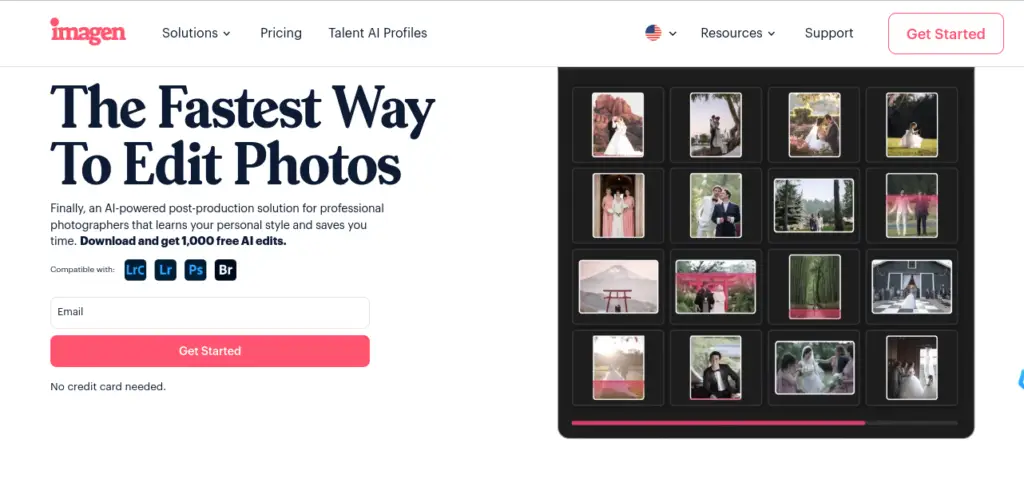
Imagen AI has the potential to benefit a wide range of users, but it’s particularly well-suited for the following groups:
1. Creative Professionals:
- Graphic Designers: Imagen AI can be a powerful tool for generating initial concepts, exploring different styles, and creating unique visuals for marketing materials, websites, or social media posts. It can significantly speed up the design process and provide inspiration for new ideas.
- Illustrators and Artists: Imagen AI can serve as a creative collaborator, helping artists generate visual references, experiment with different styles, or even create entire artworks based on textual descriptions. It can also be used to create unique digital art pieces for sale or exhibition.
- Writers and Content Creators: Imagen AI can help writers and bloggers bring their stories to life with captivating visuals that perfectly match their words. It can be used to create illustrations for articles, blog posts, social media content, or even children’s books.
- Video Producers and Filmmakers: Imagen AI can generate concept art, storyboards, or even background visuals for videos and films. It can also be used to create visual effects or animated characters.
2. Businesses and Marketers:
- Advertising and Marketing Teams: Imagen AI can streamline the creation of visual assets for marketing campaigns, social media posts, or product demonstrations. It can generate a variety of visuals tailored to different target audiences or platforms.
- E-commerce Stores: Imagen AI can generate product photos, lifestyle images, or creative banners to enhance product listings and attract customers. It can also help create personalized product recommendations based on user preferences.
- Social Media Managers: Imagen AI can create engaging visuals for social media posts, stories, or ads. It can also help maintain a consistent visual identity across different platforms.
3. Educators and Researchers:
- Teachers and Instructors: Imagen AI can generate educational materials like diagrams, illustrations, or visual aids for presentations. It can also be used to create interactive learning experiences or gamified educational content.
- Researchers and Scientists: Imagen AI can help visualize complex scientific concepts, generate data visualizations, or create illustrations for research papers and publications.
4. Individuals and Hobbyists:
- Anyone with a Creative Spark: Imagen AI can be a fun and accessible tool for anyone who enjoys expressing themselves visually. It can be used to create personalized avatars, design unique gifts, or simply explore the world of AI-generated art.
Who Might Not Benefit as Much from Imagen AI:
- Professional Photographers: While Imagen AI can generate impressive visuals, it may not fully replace the expertise and artistic vision of a professional photographer, especially for complex shoots or situations requiring specific technical skills.
- Users with Limited Resources: As mentioned earlier, Imagen AI requires substantial computational resources, making it less accessible to individuals or organizations with limited computing power. However, as the technology evolves, we can expect more efficient and accessible versions to emerge.
Overall, Imagen AI is a versatile tool with the potential to empower a wide range of users, from creative professionals to businesses to educators. As it continues to evolve and become more accessible, its impact on the creative landscape is likely to be significant.
Imagen AI Vs Traditional Image Editing Software?
While traditional editing software like Lightroom and Photoshop offers more control and flexibility, they also require a significant time investment. Imagen AI’s speed and efficiency make it a compelling alternative, especially for those with tight deadlines or large photo volumes.
Let’s compare Imagen AI to traditional editing methods:
| Feature | Imagen AI | Traditional Editing |
|---|---|---|
| Speed | Extremely fast. Can generate images in seconds or minutes, depending on complexity. | Can be time-consuming, especially for complex edits or large batches of images. Requires manual adjustments and experimentation. |
| Ease of Use | User-friendly. Requires only text prompts to generate images. No specialized design or editing skills needed. | Can have a steep learning curve, especially for advanced editing techniques. Requires proficiency in editing software and knowledge of design principles. |
| Customization | Offers some control over style, color, lighting, and composition. Customization potential is expanding with fine-tuning. | Provides extensive control over every aspect of the image, allowing for highly personalized and nuanced edits. |
| Versatility | Highly versatile. Can generate a wide range of images across diverse styles and subjects. | Versatile, but limited by the skills and experience of the editor. Requires a deep understanding of editing tools and techniques to achieve diverse results. |
| Realism | Excels at generating photorealistic images with high levels of detail and accuracy. | Can achieve realism with skilled editing, but may require extensive manual adjustments and retouching. |
| Originality | Can generate unique and original images that have never been seen before. | Originality depends on the creativity and skill of the editor. |
| Resource Intensity | Requires substantial computational resources, limiting accessibility for some users. | Requires editing software and a capable computer, but is generally less resource-intensive than Imagen AI. |
| Artistic Nuance | Can mimic artistic styles, but may lack the subtle nuances and emotional depth of human-created art. | Allows for greater artistic expression and the ability to imbue images with personal style and emotional resonance. |
| Ideal For | Ideal for quick generation of diverse, high-quality visuals, concept art, storyboarding, and exploring creative ideas. | Ideal for precise control over image details, achieving specific artistic visions, and creating images with a unique personal touch. |
| Cost | Currently in research phases, with limited public access. Pricing models for future versions are yet to be determined. | Varies depending on software and expertise. Professional editing services can be expensive. |
| Examples of Use Cases | Marketing materials, social media content, website visuals, concept art, illustrations, educational materials. | Professional photography editing, photo retouching, digital art creation, graphic design, photojournalism, fine art photography. |
Who Should Choose Which?
- Choose Imagen AI if: You need to quickly generate a variety of high-quality visuals, explore creative ideas, or lack advanced editing skills.
- Choose Traditional Editing if: You require precise control over every detail, have a specific artistic vision, or want to create images with a unique personal touch.
The Future:
As AI technology advances, we can expect Imagen AI to become more accessible, user-friendly, and capable of generating even more nuanced and personalized images. It may also offer greater control and customization options, bridging the gap between AI and traditional editing.
Ultimately, the best choice depends on your specific needs, resources, and creative goals. Both Imagen AI and traditional editing have their strengths and limitations, and they can even be used in conjunction to achieve optimal results.
Imagen AI Pricing and Plans
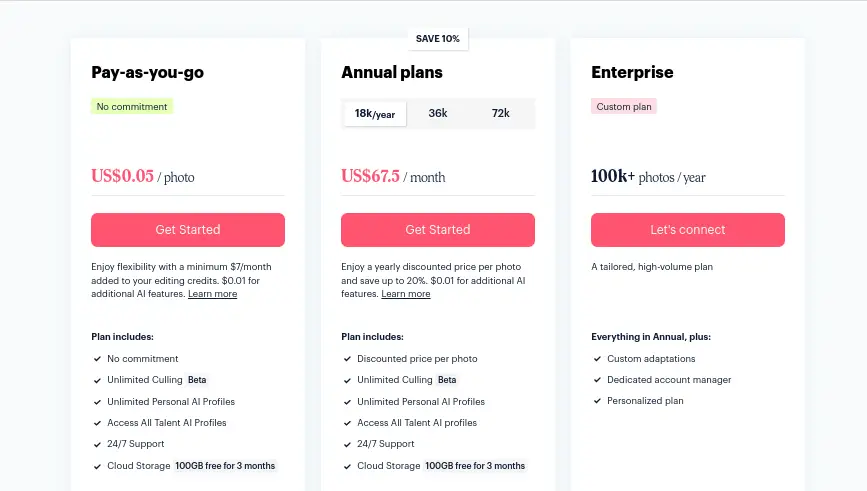
While Google’s Imagen AI is currently under research and not available for public use, there is another AI-powered editing software called “Imagen AI” with available pricing plans. Let’s take a look at their offerings in a tabulated format:
| Plan Name | Features | Pricing | Best For |
|---|---|---|---|
| Lite | AI culling, basic adjustments, color correction, cropping | Free while in Beta | Individuals or small teams starting out with AI editing, who prioritize culling and basic adjustments. |
| Pay-as-you-go | AI culling, all AI tools, manual editing | $0.05 per edit, $0.01 per photo per tool | Flexible use, ideal for those with varying editing needs who don’t want to commit to a monthly subscription. |
| Pro | AI culling, all AI tools, manual editing, priority support | $39 per month | Professionals and businesses who require advanced features, priority support, and unlimited cloud storage. |
| Custom (Enterprise) | Tailored solutions, dedicated account manager, API access, custom model training (optional) | Contact for pricing | Large studios and enterprises with specific needs and high-volume editing requirements. |
Additional Information
- Cloud Storage: Starts at $3 per month and offers various storage plans depending on your needs.
- Minimum Charge: Pay-as-you-go plan has a $7 minimum monthly fee, which converts into editing credits.
- Payment Methods: Credit card and Google Pay (in supported countries).
- Billing Cycle: Monthly on the signup anniversary.
Important Note: This pricing information is for the Imagen AI editing software and is subject to change. For the most up-to-date pricing details, please visit their official website.
Additional Resources:
- Imagen AI Pricing Page: https://imagen-ai.com/pricing/
- Imagen AI Support Article on Pricing: https://support.imagen-ai.com/hc/en-us/articles/4544978323857-Imagen-pricing-explained
My Experience with Imagen AI
My Honest Imagen AI Review: Does AI Editing Really Live Up to the Hype?
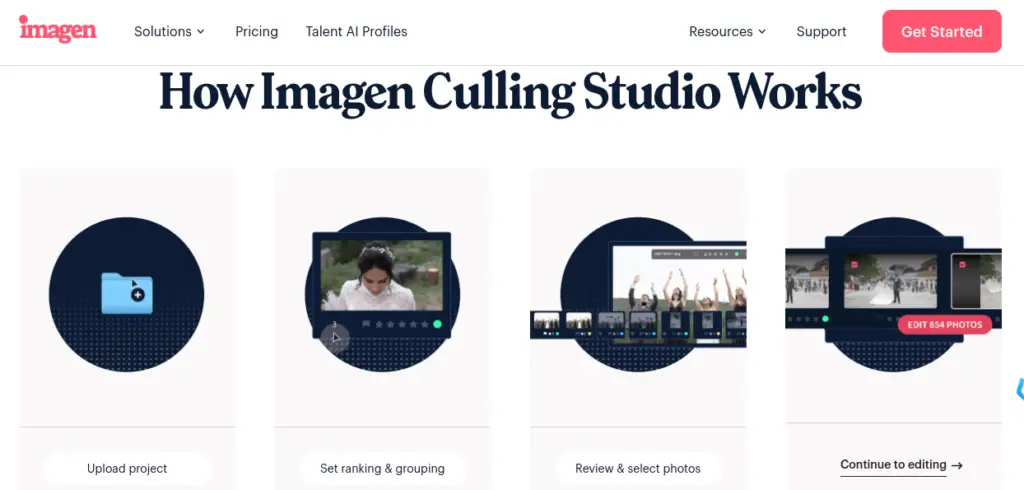
As a blogger who’s been immersed in the digital world for over a decade, I’ve seen the rise of AI in various fields, including photography. The promise of faster, more efficient editing with tools like Imagen AI is enticing, but does it truly deliver? In this review, I’ll share my first-hand experience with Imagen AI, highlighting both the impressive features and the areas where it falls short.
Getting Started: A Smooth Onboarding
Imagen AI’s onboarding process is remarkably user-friendly. Connecting it to my Lightroom catalog was a breeze, and the initial setup wizard guided me through the process of training the AI on my existing edits. This was crucial, as it allowed the AI to learn my editing style and preferences, ensuring the results were more tailored to my taste.
The Magic of AI Editing: Time-Saving and Efficient
One of Imagen AI’s biggest strengths is its ability to significantly speed up the editing process. It can batch-process hundreds of images in a fraction of the time it would take me to edit them manually. While the initial results might not be perfect, the AI’s ability to learn and adapt over time means that the edits become increasingly accurate and aligned with my style.
The Fine-Tuning Process: A Necessary Step
I found that fine-tuning the AI’s output was crucial to achieving the desired results. While the AI’s initial edits were often impressive, they occasionally missed the mark on specific details or preferences. Thankfully, Imagen AI provides easy-to-use tools for adjusting the AI’s decisions, allowing me to maintain control over the final look of my images.
Impressive Features and Notable Limitations
- AI Culling: This feature is a game-changer for wedding and event photographers who often have to sift through thousands of images. The AI can quickly identify and select the best shots, saving valuable time and effort.
- Advanced AI Tools: The AI’s ability to perform tasks like skin retouching, background removal, and even sky replacement is impressive, though not always perfect. It often requires manual adjustments to achieve the desired results.
- Manual Editing Integration: The seamless integration with Lightroom allows me to easily switch between AI and manual editing, giving me the flexibility to fine-tune the AI’s output or take full control when needed.
- Limitations: Despite its strengths, Imagen AI is not without limitations. It can struggle with complex lighting scenarios or images with multiple subjects. Additionally, the AI’s style can sometimes feel a bit generic, lacking the personal touch that a human editor can bring.
Pricing: A Mixed Bag
Imagen AI’s pricing model can be a bit confusing, with options ranging from a free trial to subscription plans and a pay-as-you-go option. While the free trial is a great way to test the waters, the paid plans can get expensive, especially for high-volume photographers.
My Verdict: A Valuable Tool, But Not a Replacement
Overall, I found Imagen AI to be a valuable tool for streamlining my editing workflow. It’s particularly helpful for tasks like culling and basic adjustments, freeing up my time to focus on more creative aspects of editing. However, it’s not a complete replacement for manual editing. I still rely on my own skills and judgment to fine-tune the AI’s output and ensure that the final images meet my standards.
Who Should Consider Imagen AI?
- High-Volume Photographers: If you regularly shoot large volumes of images, Imagen AI can be a huge time-saver.
- Photographers Seeking Efficiency: If you’re looking to streamline your editing workflow and free up more time for other tasks, Imagen AI can be a helpful tool.
- Photographers Open to Experimentation: If you’re willing to embrace AI technology and fine-tune its output, Imagen AI can be a valuable addition to your editing toolkit.
Conclusion: Imagen AI Reviews
Imagen AI is a powerful tool that has the potential to transform the way photographers edit their photos. Its ability to automate repetitive tasks, ensure consistency, and save time is undeniable. While it may not be perfect for every situation or photographer, its benefits outweigh its drawbacks for many.
If you’re looking for a way to streamline your editing workflow and focus more on your creative vision, I highly recommend giving Imagen AI a try.
Ready to revolutionize your photo editing? Try Imagen AI for free and see the difference it can make in your workflow.
Discover more from Digital Wealth Guru
Subscribe to get the latest posts sent to your email.


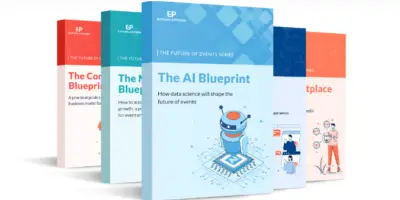

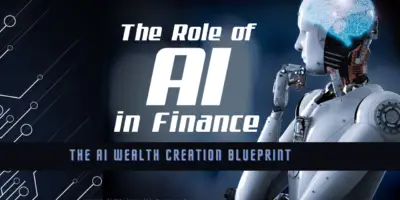
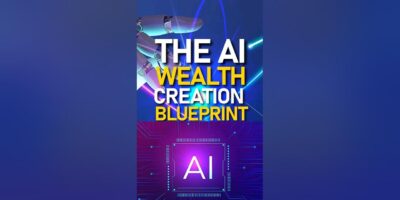


Comments